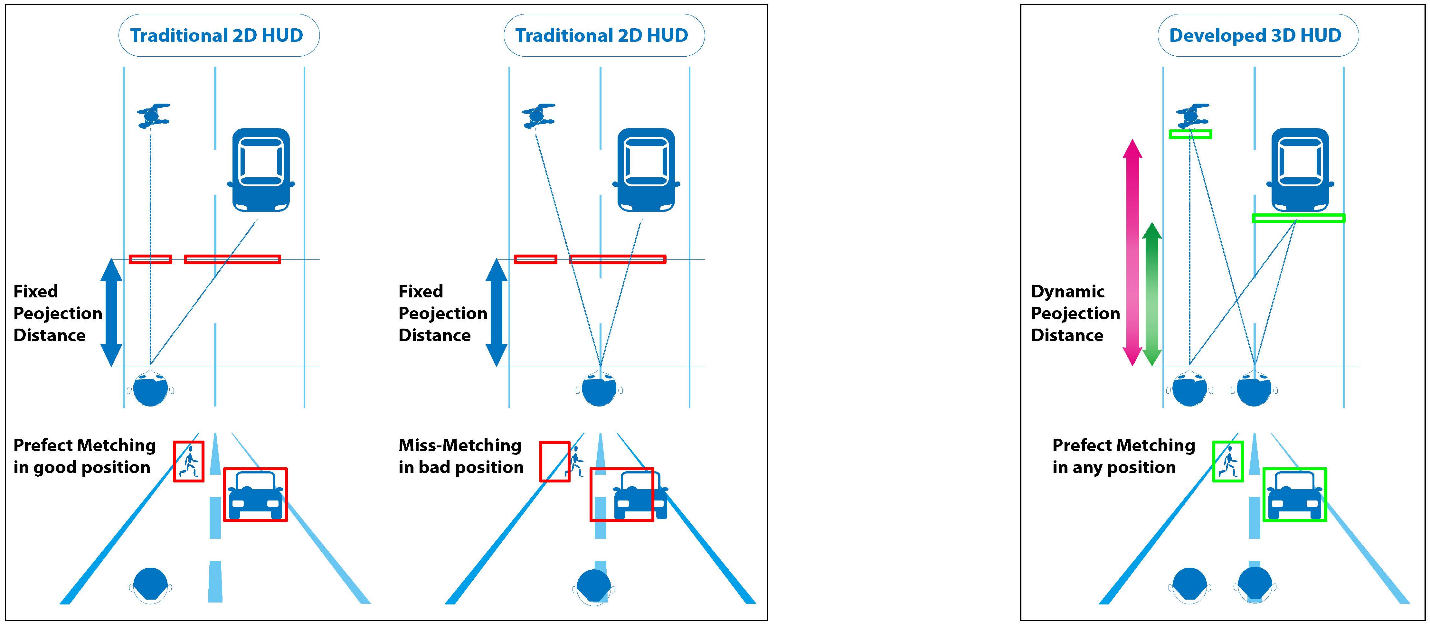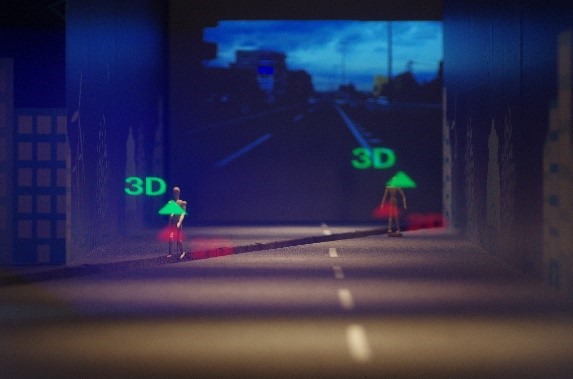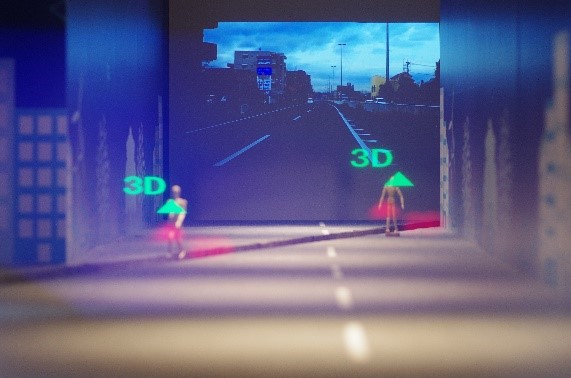3D Augmented Reality Head-Up-Display
Summary
Head-Up-Display (HUD) enables a driver to view information with his head positioned "up" and looking forward, instead of angled down looking at lower instruments. By adding the Augmented Reality technology, targets, like people and cars, can be marked to alarm to the drivers to avoid the potential accidents.
Traditional 2D AR HUD projects information messages at a certain distance away from the driver. It asks a driver to observe the projection along the optical axis at a certain point. When the driver moves his head, a miss-matching projection occurs between the projected data and the target in the real world.
In this 3D AR HUD technology, a 3D virtual display can be projected in front of the driver. AR messages will be dynamically projected according to the 3D locations of the targets. In our 3D HUD, a virtual display is projected into a three-dimensional world, so there will be no mismatch when the driver moves.

|
| Figure 1. (Left) When a user observes in a good position that follows the specified optical axis, the projected data and the target will be well matched. However, when the observing axis have any movement, in position (b), there will be a mismatch projection between the display and the real world.. (Right) In this 3D HUD technology, a 3D virtual display can be projected. AR markers will be dynamically projected according to the 3D locations of the targets. Because the message is projected into a three dimensional world, there will no mismatch even when the drivers moves. |
|---|
The following demos were recorded by two cameras, which were placed at different places. When the camera was placed along the optical axis, 2D and 3D markers were all perfectly matched. When the camera was placed at an angle to the optical axis, a mismatch was found in 2D HUD, but 3D HUD was still well matched. Another demo shows that if two messages are projected along the same line but at different distances, they are aligned when looking straight, but not aligned when looking from an angle. By using this technology, a speedometer can be dynamically projected at a near or far distance according to the car-speed, so that the driver can enjoy driving more.
This work was conducted by a joint research project between Ishikawa Watanabe Laboratory and Konica Minolta Inc..

|

|

|
Movies
If you want to use the original video, please send an e-mail for copyright permission to contact .



